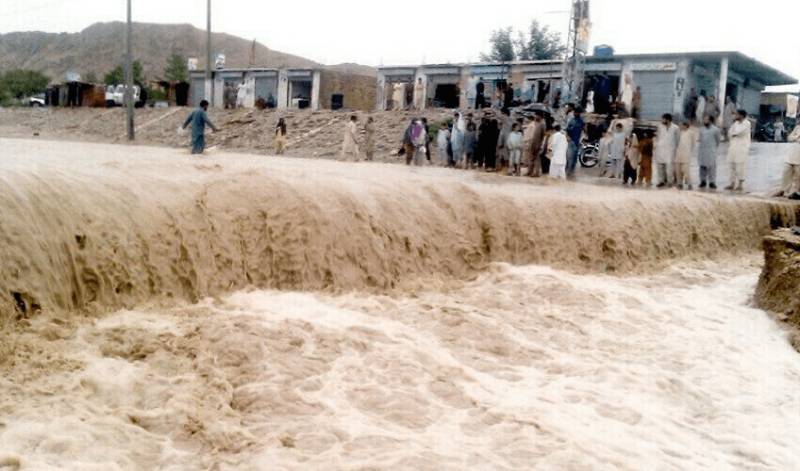LAHORE – The ongoing monsoon spell and release of water from India have led to a worsening flood situation in Punjab, with death toll reaching 46 people and number of affected people swelling to 3.7 million.
Director General of the Provincial Disaster Management Authority (PDMA), Irfan Ali Kathia, addressed a press conference detailing the extent of the crisis. He confirmed that 409 flood relief camps have been established across the province, offering essential facilities to the displaced. Over 25,000 people are currently residing in these camps.
According to Kathia, more than 1.4 million people and one million livestock have been safely relocated from flood-affected areas. Seventeen breach points have been officially notified so far.
The flood threat remains high in various regions, particularly along major rivers. The Chenab River has posed a major challenge, especially after a surge in water flow was observed last night. Several districts previously impacted by flooding from Chenab are at risk of being re-affected due to rising water levels.
The Sutlej River has been flooding continuously for the past two months, and water levels in the Ravi River have also shown a recent increase, especially near Jassar. DG PDMA warned that over the next 72 hours, all three Indian dams are expected to reach full capacity—Thien Dam has already done so.
Water levels in the Ravi River are projected to increase over the next two to three weeks. While the situation may not mirror previous peaks, significant water flow is still anticipated. In Khaniwal, 136 villages have been affected, and in Toba Tek Singh, 75 villages have been impacted.
A critical issue arises as water from Ravi is reversing its course instead of merging with Chenab, causing persistent high water levels. Until the flow subsides at Ahmadpur Sial, there will be no significant decrease at Sadhnai.
DG Kathia further identified Head Muhammad Wala as the next major concern. Punjab’s Chief Minister has visited the area to assess the situation, where water levels are just four to five feet below maximum capacity. At Sher Shah Bridge in Multan, only a two-foot margin remains before overflow. Strategic decisions regarding possible breaches have already been made in Multan to manage the situation.
Meanwhile, the Indian High Commission has formally informed Pakistani authorities about the high flood risk in the Sutlej River due to heavy rains and increased water discharge.
The Ministry of Water Resources in Pakistan issued an alert based on this notification, warning that extreme flood conditions could arise at Harike and Ferozepur, leading to dangerous surges towards the Pakistani side of the Sutlej.
Authorities remain on high alert as the situation continues to evolve with the ongoing monsoon season and upstream water inflow from India.














